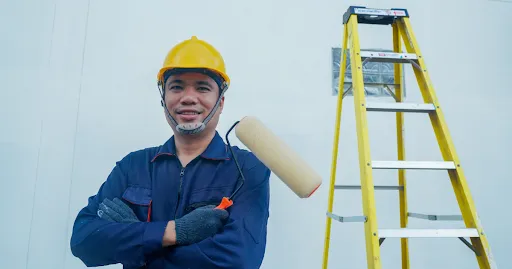
PRO PAINTING BLOG
Recent Updates

Ensuring Safety in Commercial Exterior Painting Projects
Safety First: Protecting Lives in Commercial Exterior Painting Projects
Commercial exterior painting is more than just applying a fresh coat of paint. It involves working at heights, handling chemicals, and dealing with environmental factors. Without proper safety measures, these projects can lead to severe injuries or even fatalities. At Sioux City Pro Painting, we prioritize safety in every commercial exterior painting project to ensure the well-being of our workers and clients.
A safe worksite means fewer delays, better results, and a lower risk of costly liabilities. Whether painting office buildings, retail centers, or industrial facilities, following strict safety protocols protects both the team and the surrounding community.
Common Hazards in Commercial Exterior Painting
1. Working at Heights
Most commercial buildings require painters to work on scaffolding, lifts, or ladders. Falls are one of the leading causes of injuries in the painting industry. Without proper precautions, painters risk serious harm. Key safety measures include:
Using secure scaffolding with guardrails and toe boards.
Inspecting ladders before use and securing them on stable ground.
Providing harnesses and fall protection gear when working at significant heights.
Training workers on proper ladder and scaffold usage.
2. Exposure to Hazardous Materials
Paints, primers, and solvents contain chemicals that may be harmful if inhaled or touched. Long-term exposure can lead to respiratory issues, skin conditions, or eye damage. To minimize risks:
Use protective gear, including gloves, safety goggles, and respirators.
Ensure proper ventilation, especially when working with solvent-based paints.
Opt for low-VOC or eco-friendly paints to reduce harmful fumes.
Train workers on safe handling and disposal of hazardous materials.
3. Electrical Hazards
Painters often work near power lines or electrical fixtures. Accidental contact with electricity can result in severe injuries or fatalities. Safety measures include:
Maintaining a safe distance from overhead power lines.
Using non-conductive ladders and tools when working near electrical sources.
Deactivating power sources in work areas when necessary.
Wearing insulated gloves and boots for added protection.
4. Weather-Related Risks
Outdoor painting projects are heavily impacted by weather conditions. Extreme temperatures, rain, or wind can increase risks. Potential hazards include:
High winds knocking over ladders or scaffolding.
Rain making surfaces slippery, increasing the likelihood of falls.
Heat exposure leading to dehydration or heat exhaustion.
To prevent weather-related injuries:
Check weather forecasts before starting work.
Schedule painting during mild weather to avoid extreme conditions.
Provide shade, water, and breaks for workers during hot days.
Postpone work during storms, strong winds, or heavy rain.
5. Falling Objects and Debris
Construction zones, including painting projects, involve tools, paint cans, and equipment that can fall and cause injury. Preventive measures include:
Keeping work areas organized to reduce clutter.
Using tool lanyards to secure equipment when working at heights.
Wearing hard hats to protect against falling debris.
Setting up exclusion zones to prevent unauthorized access to work areas.
Essential Safety Measures for Exterior Painting
1. Comprehensive Safety Training
Proper training is the foundation of a safe work environment. All workers should be trained in:
Fall protection and ladder safety.
Proper handling of hazardous materials.
Emergency response procedures.
Safe operation of painting equipment.
Regular safety refreshers and certifications ensure compliance with industry standards.
2. Using the Right Personal Protective Equipment (PPE)
Wearing the right protective gear reduces the risk of injuries. Key PPE includes:
Respirators or masks to prevent inhaling fumes.
Safety goggles to protect against paint splashes.
Gloves to shield hands from chemicals.
High-visibility vests to enhance worker visibility in busy areas.
Non-slip boots to prevent falls on slick surfaces.
3. Implementing Site Safety Protocols
Before starting any commercial exterior painting project, a thorough site assessment should be conducted to identify potential hazards. Safety protocols include:
Installing warning signs to alert workers and passersby of potential dangers.
Marking off hazardous zones with cones or barricades.
Designating emergency exits and first aid stations.
Ensuring proper lighting for visibility during early morning or late evening work.
4. Following OSHA Guidelines
The Occupational Safety and Health Administration (OSHA) has strict regulations for workplace safety. Compliance with these standards is crucial for a secure painting project. OSHA requirements include:
Providing fall protection for workers above six feet.
Ensuring proper scaffolding setup and inspection.
Using hazard communication programs to inform workers about chemical risks.
Conducting routine safety audits to ensure ongoing compliance.
5. Emergency Preparedness
Even with precautions, accidents can happen. A solid emergency response plan should include:
First aid kits readily available on-site.
Trained personnel capable of responding to medical emergencies.
Clearly posted emergency contacts and procedures.
Fire extinguishers and spill control materials in case of accidents.
Best Practices for a Safe and Efficient Painting Project
1. Choosing the Right Equipment
Using the correct tools improves both safety and efficiency. Key equipment includes:
Airless sprayers for smooth, even application.
Extension poles to reduce the need for ladders.
Drop cloths and protective coverings to minimize mess and hazards.
2. Clear Communication Among Team Members
A well-coordinated team minimizes risks and improves efficiency. Communication strategies include:
Daily safety briefings to review hazards and procedures.
Assigned roles to ensure accountability.
Hand signals and radios for workers at heights.
3. Scheduling Work at Optimal Times
Planning the painting schedule around weather and daylight conditions reduces risks. Best practices include:
Avoiding work during extreme heat or cold.
Starting early to maximize daylight hours.
Checking weather reports before beginning each project.
4. Regular Site Inspections
Routine safety inspections help catch potential hazards before they become serious issues. Key areas to inspect include:
Scaffolding stability.
Condition of ladders and safety gear.
Secure storage of paints and chemicals.
Why Choose Sioux City Pro Painting for Safe Exterior Painting?
At Sioux City Pro Painting, we believe that safety is the foundation of every successful commercial exterior painting project. Our team follows strict industry standards, provides expert safety training, and ensures every worksite is secure.
From proper protective gear to OSHA-compliant procedures, we take every measure to protect our workers, clients, and the surrounding environment. Whether painting office buildings, warehouses, or retail spaces, we deliver high-quality results while prioritizing safety.
For professional painting services that put safety first, contact Sioux City Pro Painting today!
WELCOME
Welcome to our site! We are in the process of building our blog page and will have many interesting articles to share in the coming months. Please stay tuned to this page for information to come. And if you have any questions about our business or want to reach out to us, we would love for you to stop by our contact page.
Thank you!
Home | Get a Quote | Privacy Policy | Contact
©2023 Sioux City Pro Painting - All rights reserved
Created by Showcase 712